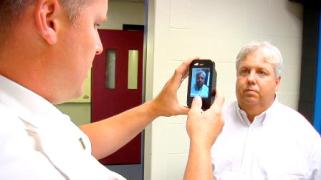I read this article a couple of days ago, but this little snippet was what stuck in my head. It was cool to see John Stossel build a ‘snow mobile’ out of these ideas, and to learn about Spontaneous Order and the Peltzman Effect. You learn something new all the time, and perhaps some of you out there, or even myself, will build something out of these concepts in the future?
One thing that I would like to add to this article is the ‘roundabout‘. I like the roundabout, because it is the best mixture of channeling traffic efficiently as well as putting more decision making in the minds of drivers. You enter the thing, you are channeled throughout the entire process, and you decide when to turn out. There is also a faster flow of traffic, and less idle time which equates to better fuel usage in those areas that use the system. And according to these guys, they are safer and more efficient. There are some signs for the roundabout, like to indicate it is coming up or to yield to oncoming traffic, but it is not nearly as sign intensive or as confusing as the standard traffic stop in the US or elsewhere. –Matt
—————————————————————–
From John Stossel’s Private Industry Does It Better, Page 2
August 5th, 2010
It’s Friedrich Hayek’s “spontaneous” order in action: Instead of sitting at a mechanized light waiting to be told when to go, drivers meet in an intersection and negotiate their way through by making eye contact and gesturing. The secret is that drivers must pay attention to their surroundings — to pedestrians and other cars — rather than just to signs and signals. It demonstrates the “Peltzman Effect” (named after retired University of Chicago economist Sam Peltzman): People tend to behave more recklessly when their sense of safety is increased. By removing signs, lights and barriers, drivers feel less safe, so they drive more carefully. They pay more attention.
In Drachten, Holland, lights and signs were removed from an intersection handling about 30,000 cars a day. Average waiting times dropped from 50 seconds to less than 30 seconds. Accidents dropped from an average of eight per year to just one.
On Kensington High Street in London, after pedestrian railing and other traffic markers were removed, accidents dropped by 44 percent.
“What these signs are doing is treating the driver as if they were an idiot,” says traffic architect Ben Hamilton-Baillie. “If you do so, drivers exhibit no intelligence.”
Story here.
—————————————————————
By Wikipedia
The Peltzman effect is the hypothesized tendency of people to react to a safety regulation by increasing other risky behavior, offsetting some or all of the benefit of the regulation. It is named after Sam Peltzman, a professor of Economics at the University of Chicago Booth School of Business.
From the foreword of a talk by Peltzman at the American Enterprise Institute:
Sam Peltzman is one of the few economists, and probably the only regulatory economist, to have an effect named after him — the “Peltzman effect.” The Peltzman effect arises when people adjust their behavior to a regulation in ways that counteract the intended effect of the regulation. So, for example, when the government passes a seatbelt law, some drivers may respond by driving less safely. It turns out that the Peltzman effect has widespread application and has spawned, like much of Professor Peltzman’s other work, a veritable cottage industry for economists.
